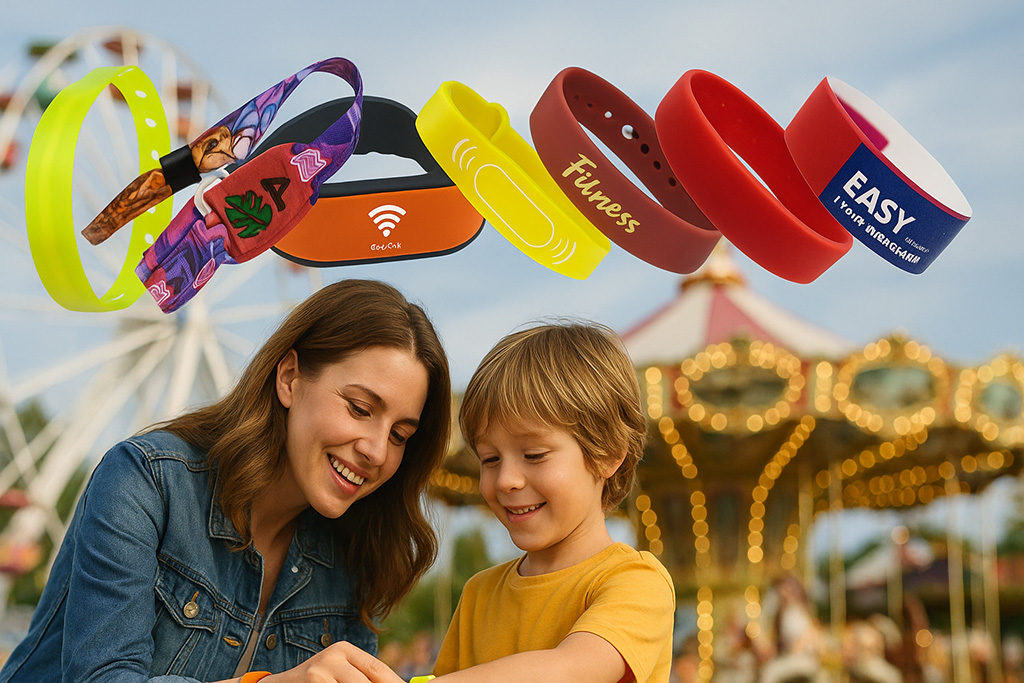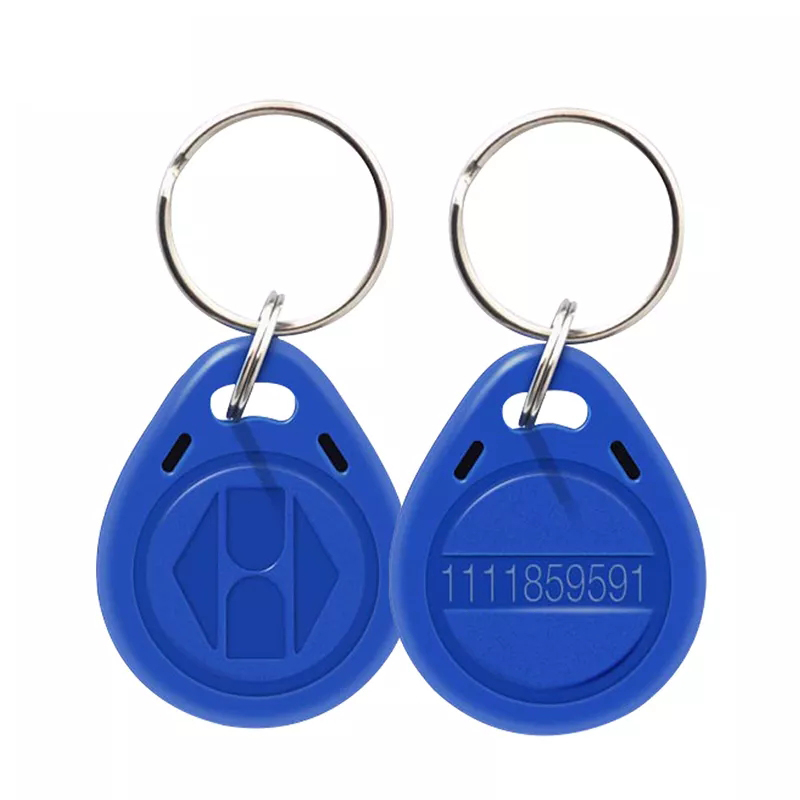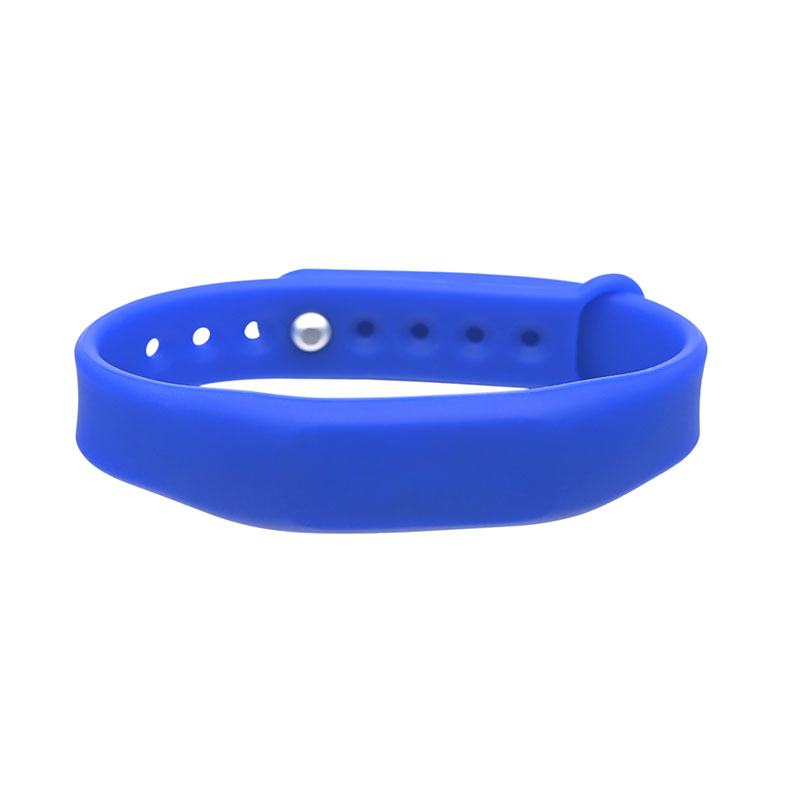
Water parks are among the most popular leisure destinations during the warmer months, attracting thousands of visitors daily at the height of summer. While this high attendance brings impressive revenue potential, it also presents a complex set of operational challenges. Long queues at entry gates, slow payment processes, lost locker keys, and safety concerns—especially with children—are all issues that can affect guest satisfaction and operational efficiency.
In recent years, RFID wrist tags have emerged as a transformative solution for water park management. Using radio frequency identification technology, these waterproof wearable devices can perform multiple functions simultaneously: ticket validation, cashless payments, locker access, guest tracking, and data collection. This integration of multiple services into one wearable device is not just convenient for visitors—it can fundamentally improve a park’s operational model, increasing both safety and profitability.
This article explores the fundamentals of RFID wrist tags, the operational challenges they solve, real-world success stories, implementation strategies, and future trends—offering water park operators a comprehensive guide to understanding and deploying this technology effectively.
Understanding RFID Wrist Tags
RFID (Radio Frequency Identification) is a wireless communication technology that uses radio waves to identify and track objects or people. Unlike barcodes, which require direct line-of-sight scanning, RFID allows for contactless and rapid data exchange over short distances.
An RFID wrist tag—sometimes called an RFID wristband—is a small, waterproof, and durable wearable that contains an embedded RFID chip. This chip stores and transmits data when it comes into proximity with an RFID reader. The basic components of an RFID system in a water park setting include:
RFID Tag (the wristband) – Contains a microchip and antenna. The chip stores a unique identifier and, in some cases, user-specific data such as payment information or locker assignments.
RFID Reader – Installed at entry gates, payment counters, lockers, or strategic checkpoints within the park. The reader emits radio waves that activate the wrist tag and receive its stored data.
Backend Management System – Software that processes the data received by the readers, manages guest accounts, processes payments, controls access permissions, and generates operational reports.
How it works in practice: A guest receives their RFID wrist tag upon entry, preloaded with their ticket credentials and optionally linked to a prepaid balance or payment method. As the guest moves around the park, they simply tap the wristband against RFID readers to gain entry to rides, pay for snacks, open their locker, or locate their group members.
The technology’s strength lies in its ability to unify multiple guest interactions into one simple, secure, and water-resistant device—perfectly suited for aquatic environments.
Current Challenges in Water Park Management
Water parks are unique in that they combine the high-volume traffic of a theme park with the operational complexity of aquatic safety regulations. The most common management challenges include:
1. Long Queues and Inefficient Ticketing
Traditional ticketing often requires guests to present printed tickets or scan barcodes on mobile devices. In high-traffic periods, this process can be slow, creating frustration before the guest even enters the park.
2. Cash and Card Payment Limitations
Carrying cash or credit cards in a water park is inconvenient and risky. Waterproof pouches are impractical, and wet hands can damage or interfere with payment cards and devices.
3. Locker Key Management
Physical locker keys can be lost, stolen, or misplaced, leading to guest dissatisfaction and operational inefficiencies. Replacing keys mid-day can also be time-consuming.
4. Safety Concerns and Lost Guests
Large parks with multiple pools and attractions make it easy for children to become separated from parents. Staff members may struggle to locate a lost child quickly without a reliable tracking system.
5. Limited Operational Data
Without precise data on guest flow, ride usage, and spending patterns, management decisions often rely on estimates rather than concrete insights. This lack of information can lead to under- or over-staffing, inventory issues, and missed revenue opportunities.
The real power of RFID wrist tags lies in their multifunctionality. They address multiple operational pain points simultaneously, delivering tangible improvements to guest experience and business performance.
1. Seamless Ticketing and Park Entry
RFID wrist tags replace paper tickets and barcode scans with a simple tap. Guests can pass through entry gates in seconds, significantly reducing queues. This not only improves the first impression but also increases throughput, enabling the park to accommodate more visitors during peak times without sacrificing experience quality.
2. Cashless Payments Inside the Park
By linking the wrist tag to a prepaid account or credit card, guests can make purchases throughout the park simply by tapping their wristband at a point-of-sale reader. This cashless system:
Eliminates the need for wallets or phones in wet environments.
Speeds up transactions, allowing for more purchases per hour.
Reduces theft risks by minimizing physical cash handling.
According to case studies from parks that have adopted cashless RFID systems, in-park spending often increases by 15–30%, as guests find it easier to make spontaneous purchases without payment friction.
3. Locker and Equipment Access Control
Each RFID wrist tag can be programmed to open a specific locker, replacing the need for physical keys. Guests simply tap their band to lock or unlock their assigned unit. For rentals such as tubes, towels, or cabanas, the wrist tag can serve as a digital check-in/check-out tool, reducing disputes and lost inventory.
4. Real-Time Location Tracking and Safety
With strategically placed readers around the park, RFID wrist tags can provide location data for guests—particularly valuable in cases of lost children or emergency evacuations. Parents can opt into location services, allowing staff to pinpoint a missing child’s location in seconds. This system also enhances staff coordination during incidents, improving response times.
5. Data-Driven Operations
RFID wrist tags generate a wealth of operational data, including:
Ride popularity and peak usage times.
Purchase patterns by location and time of day.
Guest flow between different park zones.
Average duration of stay.
Management can use these insights to adjust staffing levels, optimize ride operations, tailor marketing campaigns, and improve guest services—turning anecdotal observations into actionable intelligence.
Case Studies and Real-World Examples
Case Study 1 – Improving Throughput and Guest Satisfaction
A mid-sized North American water park replaced traditional tickets with RFID wrist tags, reducing average entry time per guest from 45 seconds to under 10 seconds. Over the season, this improvement allowed the park to admit an additional 30,000 guests without extending operating hours.
Case Study 2 – Boosting In-Park Revenue
In Europe, a large water resort integrated RFID cashless payments into all its food, beverage, and retail outlets. Average per-guest spending increased by 22% in the first year. Guests cited “convenience” and “no need to carry money” as key reasons for buying more snacks and souvenirs.
Case Study 3 – Enhancing Safety
In one high-profile incident, an RFID-enabled safety system helped locate a lost child within three minutes. Staff were able to reassure the parents and restore their experience without prolonged disruption.
These examples demonstrate that RFID wrist tags are not just a convenience—they are a strategic asset that can significantly impact a water park’s bottom line and reputation.
Implementation Guide for Water Parks
Step 1 – Infrastructure Assessment
Before implementation, conduct a thorough audit of current ticketing, payment, and security systems. Identify integration points and potential bottlenecks.
Step 2 – Choosing the Right RFID Hardware
Select wristbands designed specifically for aquatic environments:
Fully waterproof and chlorine-resistant.
Comfortable for extended wear.
Available in adjustable sizes for different age groups.
Capable of both high-frequency (HF) and ultra-high-frequency (UHF) communication if needed for broader functionality.
Step 3 – Deploying Readers and Software
Install RFID readers at:
All entry and exit gates.
Locker areas.
Food and retail points.
Key ride entrances.
Choose a backend system capable of integrating ticketing, payment processing, and guest management into one dashboard.
Step 4 – Staff and Guest Training
Employees must understand both the technical and customer service aspects of RFID usage. Guests should receive clear, friendly instructions on how to use their wrist tags for entry, payment, and locker access.
Step 5 – Data Utilization
Establish a data review cycle to analyze usage patterns and performance metrics. Use these insights to improve crowd management, reduce wait times, and tailor promotions to guest preferences.
ROI Expectations: Parks typically recover their initial investment within12–18 months through increased operational efficiency, reduced losses, and higher guest spending.
Future Trends in RFID for Water Parks
The evolution of RFID technology is opening new possibilities for water park operators:
Integration with Mobile Apps – Guests can preload wristbands via smartphone, view their spending history, or locate friends and family in real-time.
AI-Driven Analytics – Combining RFID data with machine learning algorithms can predict guest flow and optimize staffing before peak surges occur.
Personalized Guest Experiences – RFID data can trigger tailored offers, such as discounts on a guest’s favorite snack or ride recommendations based on their activity patterns.
Hybrid NFC and RFID Solutions – Supporting both technologies expands compatibility with smartphones and external devices.
These trends suggest that the role of RFID wrist tags will only grow more central to the theme park and water park industries over the next decade.
Conclusion
RFID wrist tags are more than a convenience—they represent a comprehensive platform for improving every aspect of water park management. By enabling seamless entry, cashless payments, secure locker access, real-time safety tracking, and rich operational analytics, they empower park operators to deliver a safer, more efficient, and more enjoyable experience for guests.
As competition among leisure venues intensifies, adopting RFID technology can be a decisive factor in both guest satisfaction and financial performance. For water parks aiming to thrive in the digital age, the question is no longer if RFID wrist tags should be implemented, but when.
Why Choose Us?
Established in 2010 – Over a decade of RFID experience
Full customization – RFID cards, wristbands, key fobs, and smart devices
High quality – ISO-compliant materials (ISO 14443, ISO 15693)
Secure solutions – Encrypted protocols and data protection
Flexible scalability – From startups to enterprise-level projects
Contact us today to learn how we can help streamline your inventory management with reliable, smart RFID solutions.





